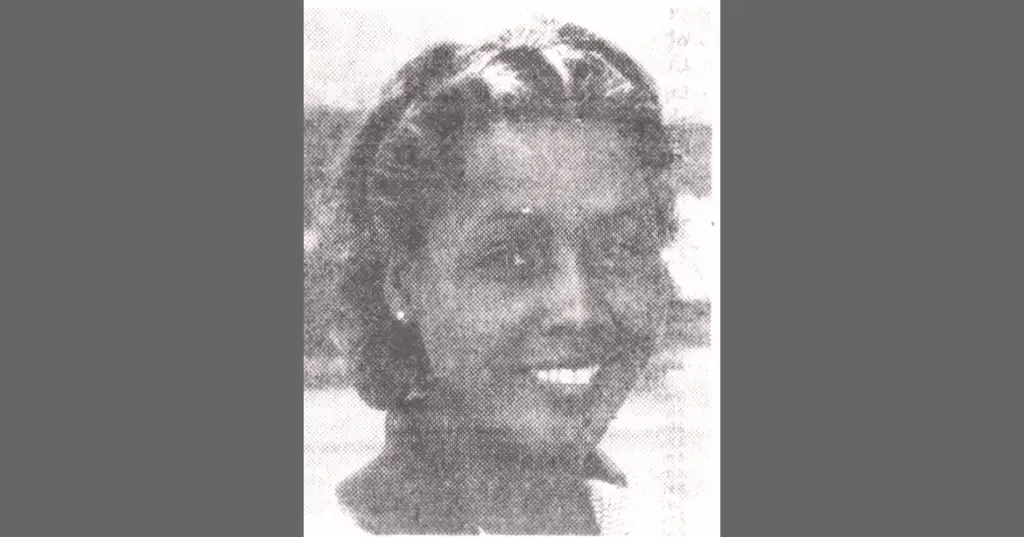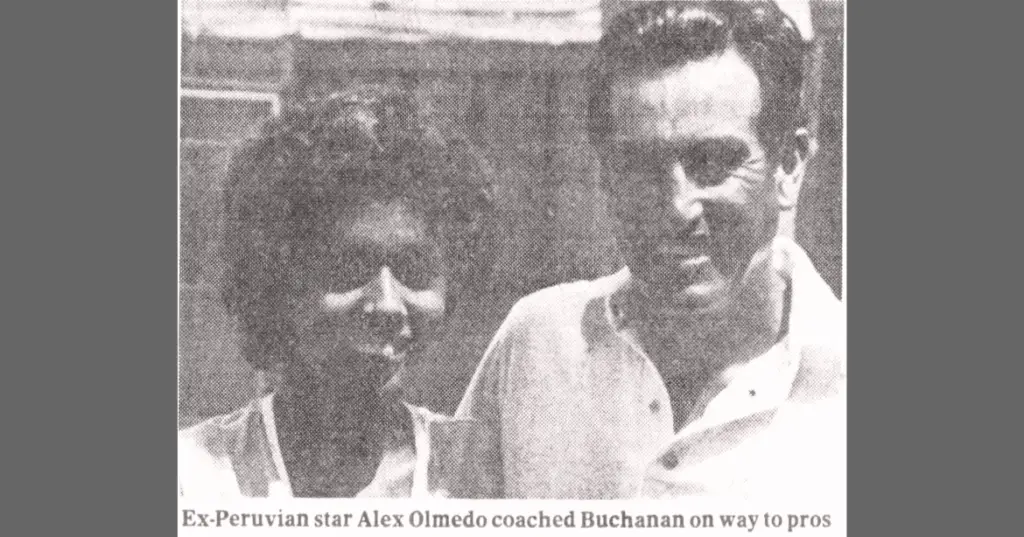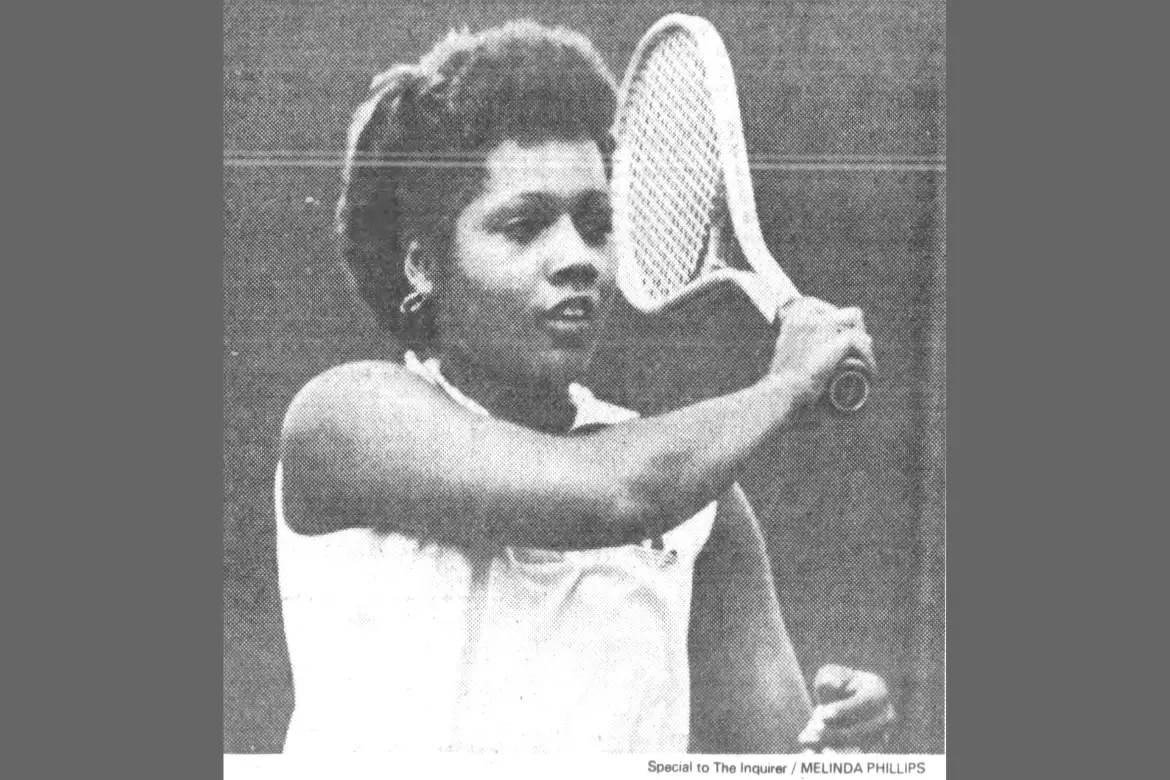Andrea Buchanan, 26, was a rising international tennis star when an unknown killer(s) entered her workplace and killed her and her boss, Nathaniel Brown, in 1982. The case remains unsolved 42 years later.
Who Was Andrea Buchanan?

Andrea was born in Los Angeles on April 6, 1955, to John and Chellious Buchanan, one of four children. She has an older sister, Antoinette (Toni), and two brothers, John III and Byron.
Her father, John, worked as a film technician, and Chellios was an electrocardiogram technician, providing well for their four children. They raised their family at 1710 Middleton Place in Los Angeles in a two-bedroom California bungalow built in 1912.
When Andrea was in the 10th grade at Susan Miller Dorsey High School, she told her family that she wanted to take tennis in her physical education class. And her love for tennis began.
She progressed rapidly and soon played for the school tennis team. She practiced for hours at nearby Rancho Cienega Park, and Chellious would transport her in the family’s station wagon between tournaments.
Following high school graduation, Andrea had no interest in going to college. Instead, she landed a secretarial job, played tennis during lunch, and competed in weekend tournaments.
Andrea also met and married Archie Whitmore, a former professional basketball player, who encouraged her to play more. They later divorced.
In 1978, when she was 23, Andrea played in the sectional tournaments in Southern California and scored a rare triple victory – in women’s singles, doubles, and mixed doubles – at the National Public Parks Championships, becoming the first black woman to win all three major titles in the history of the tournament (Masek, 2013).
Andrea gave up her secretarial job shortly after to focus on her tennis career. She accepted an invitation to play in a Tucson tournament that Ebony and Jet magazines sponsored. Andrea won the game and beat ex-football star Jim Brown in a celebrity event.
Andrea also caught the attention of magazine publisher John H. Johnson, who owned Johnson Publishing Co. and offered her a sponsorship, which she gladly yet nervously accepted. However, the publishing firm did not renew its sponsorship after a year.
Andrea returned to L.A. Over the next few months taking lessons with former Peruvian star Alex Olmedo, who taught at the Beverly Hills Hotel.
“She was fighting Mother Nature all the way,” Alex said in 1982. She started late and got good late. But she was so quick afoot that she might have overcome her age. She took a lot of good players to three sets.”
In 1979, Andrea went on to play in several tournaments and qualified for Wimbledon and the U.S. Open. By summer’s end, she had climbed to No. 90 in the Women’s Tennis Association computer rankings (Goldstein, 1982)
Over the next two years, Andrea played in various tournaments and championships. You can read more about her career at cemeteryguide.com.
Sorry, I’m not a sports writer. 🤷 Plus, it’s a great write-up!

The Double Murder of Andrea Buchanan and Nathaniel Brown.
In August 1981, Andrea and her sister, Toni, lived together on Muirfield Road in Baldwin Hills, Los Angeles.
That same month, Na Marion’s Fish Market opened in the area, and Andrea occasionally shopped there. Nathaniel Brown owned the market and named it after himself and his wife, Marion.
Brown was a shady character who originally hailed from Detroit, where he had served time in prison on a murder conviction. After his release, Brown moved to L.A. in the late 1960s. He was arrested for selling drugs in 1976 and spent three years at the federal prison Terminal Island in Long Beach.
After his release in 1979, Brown purchased a building at 3845 Santa Rosalia Blvd. in the Crenshaw District of L.A., the future site of his fish market.
(All buildings above were demolished in 2012, and another building sits on the site.)
But Brown quickly returned to his old criminal ways, and Marion left him. One day, Brown offered Andrea a sponsorship if she worked for him part-time, and she accepted the offer.
“I once sponsored a girl on a rollerskating tour,” Brown told her. “Work for me for a while, and I’ll sponsor you.”
Andrea had no idea who Brown was or the crowd he associated with. Brown, 57, was six months behind on rent and could not pay his utility bills or afford his cocaine habit. He knew he needed fast cash, so Brown “set up a deal as the middle man, arranging for someone to front the money to the supplier. Brown would pass the dope to the buyer and take payment, with the profit split among Brown, the money man, and the supplier.” (Goldstein)
Los Angeles detectives later estimated the deal to be around $60K worth of cocaine.
On January 26, 1982, Brown received a package of coke from the money man and delivered it to the buyer, who called the drug “bad” and handed it back to Brown. Brown then told the money man about it. The money man said he would accept the package back and arranged a meeting with Brown for early January 28 at Brown’s fish market. However, Brown suspected the money man had switched the dope, so he was not going to the meeting alone. (Goldstein)
For whatever reason, Brown called Andrea shortly after midnight on January 28. Their phone conversation is unknown, but Andrea left her home alone at 3 a.m.
Around 6:30 a.m., a woman driving down Santa Rosalia Blvd. spotted two men running from Brown’s fish market. She did not think much of it, so she did not call the police.
At 8:30 a.m., first-shift employees arrived at the market to begin their work day and found Andrea and Brown on the floor. Both had been shot. Brown was dead, but Andrea was still clinging to life.
“The money man had to eliminate Brown to save his own reputation,” said then-Los Angeles detective John Bunch. “Now it’s his word against Brown, and Brown’s dead. Andrea got sucked in. When you’re talking drugs like this, you’re talking a lot of money. If they have to kill to keep it, that’s what they’ll do.”
Early reports state that Andrea received five bullet wounds to her upper body; however, newer ones say two.
Andrea was transported to Brotman Memorial Hospital in Culver City, where she was pronounced dead at 9:28 a.m.
There were no signs of forced entry at the store, so detectives theorized Andrea or Brown let the killer(s) inside. Through the investigation, they became aware of the drug meeting that took place between Brown and the money man, who they never identified or arrested.
Word Spreads of Andrea’s Murder
Andrea’s murder sent shockwaves through the tennis community, and it deeply affected those who knew her well.
Leslie Allen was the defending champion of the Avon Championship but lost a first-round match in Detroit. She had called Andrea on the night of her murder, but Andrea never answered. “I called kind of late, and I thought it was weird she wasn’t there. I remember leaving her a message saying, ‘Girls, where are you?'”
Allen and Andrea became close friends after playing on the Avon Futures circuit in 1979.
The legend, Billie Jean King, walked off the court in the middle of her first-round Avon Championship match, saying she was too upset about Andrea to continue playing.
“I was fighting myself the whole time,” King said, who had never walked out on an opponent before. (News-Pilot, 1982) “But I couldn’t stand out there and go through the motions.” King also said she contemplated retirement.
“I was going to decide after Detroit,” she said. “I promised Avon to play in three tournaments. This was the third. After this, it’s probably doubtful.
“I was OK until last Tuesday when I found out Andrea had been killed,” King said. “I haven’t been the same since. My mind has been on everything but tennis.”
At the time of her murder, Andrea was one of five black female tennis professionals and ranked No. 105 in the world by the Women’s Tennis Association. (Masek) She is buried at Evergreen Cemetery in L.A. The double murder remains unsolved. There are no pictures of Brown.
Andrea’s friends described her as a “free spirit” with much energy and vitality. They said the first thing you noticed about her was her smile and that she lightened up any room she entered. Her friends called her “Miss Personality.”
“She was outgoing with everyone, from the promoter to the ball kids,” Allen said.
Her closest friend, Carlos Ramirez, frequently played tennis with Andrea. “She was very athletic, but in a graceful manner,” he said in March 1982. She never seemed to run fast, but she got the ball.”
Sources
Goldstein, Steve. “A Blooming Young Life and Career, Cut Short.” The Philadelphia Inquirer, March 22, 1982.
“King Considers Retirement.” News-Pilot (San Pedro, California), February 4, 1982.
Masek, Mark. “The Stories Behind the Stones: Andrea Buchanan.” CemeteryGuide.com, January 31, 2013. https://www.cemeteryguide.com/gotw-buchanan.html



